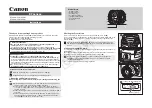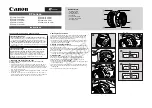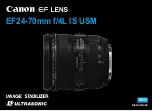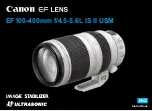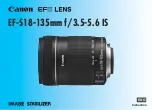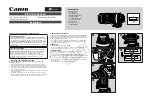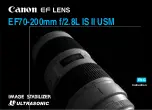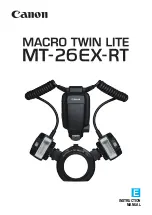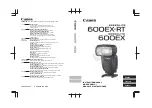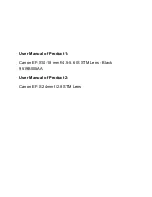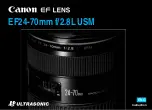
9
Please note:
An individual power setting for the modeling lamp is not availab-
le for this model. Move the On/Off selector switch to position ‚I‘
to use the device without modeling lamp but with flash function
only.
3. Switch on/off the photocell
1. Press the On/Off knob for the photocell (Fig. 2, F) to activate
the photocell. Synchronous flashing is now possible.
2. Press the On/Off knob for the photocell (Fig. 2, F) again to
disable the photocell.
4. (Flash)Test knob
Press the (Flash)Test knob (Fig. 2, G) to perform a simple flash
test and therefore verify the functionality of the settings you
have made.
After charging of the flash has finished the function indicator
above the (Flash)Test knob turns on and a signal sounds. The
flash can be used. If the function indicator is switched off flas-
hing is not possible.
5. Switch on/off the acoustic signal
Press the On/Off switch for acoustic signal (Fig. 2, B). The fun-
ction indicator above the switch lights up. The acoustic signal
is switched on.
Press the On/Off switch for acoustic signal (Fig. 2, Bagain.
The function indicator above the switch turns off. The acoustic
signal is switched off.
6. Overheating protection
The overheating protection will be activated when a thermal
overload of the device exists (e.g. to fast flash sequences with
high flash energy for longer time and with the modeling swit-
ched on, high ambient temperature). Then the charging of the
capacitor will be blocked. This is a normal safety function of the
device and prevents damage to it.
• Turn off the device and let it cool down for some time
After the internal temperature is reduced to a normal value the
capacitor will be charged regarding to the selected flash ener-
gy. Die function indicator above the Test knob turns on, a short
signal sounds and start work again.
7. Flash triggering with the camera
NOTE!
Read the instruction manual of your camera to learn more
about flash triggering. A corresponding socket for accessories
ist needed.
1. Put the 3.5mm plug of the sync cable (Fig. 1, F) into the cor-
responding socket (Fig. 2, H) of the flash device.
2. Put the barrel connector of the sync cable into the corre-
sponding accessory socket of your camera. Now you can
trigger the flash with your camera.
8. Optional wireless flash triggering
BRESSER offers many optional trigger sets. With these sets
you can wireless trigger several flashes at the same time.
Each set includes a receiver and a sender. The sender has to
placed on the hotshoe of the camera and the receiver will be
connected in the jackplug of the studioflash. Find more infor-
mation about the setup in the instruction manual of the respec-
tive trigger set.
Compatible accessories for this product such as remote
triggers, light shapers, tripods, bags and much more you
will find in our webshop under www.photostudio.equip-
ment
Cleaning and maintenance
Before cleaning the device, disconnect it from the power supply
(remove plug or remove batteries)!
Only use a dry cloth to clean the exterior of the device. To avoid
damaging the electronics, do not use any cleaning fluid.
Protect the device from dust and moisture. Store it in the
supplied bag or transportation packaging. The batteries should
be removed from the unit if it has not been used for a long time.
Disposal
Dispose of the packaging materials properly, according to
their type, such as paper or cardboard. Contact your local
waste-disposal service or environmental authority for information
on the proper disposal.
Do not dispose of electronic devices in the household
garbage!
As per Directive 2002/96/EC of the European Parliament on
waste electrical and electronic equipment and its adaptation
into German law, used electronic devices must be collected
separately and recycled in an environmentally friendly manner.
Please take the current legal regulations into account when
disposing of your device. You can get more information on
the proper disposal from your local waste-disposal service or
environmental authority.
EC Declaration of conformity
Bresser GmbH has issued a "Declaration of Conformity"
in accordance with applicable guidelines and
corresponding standards. This can be viewed any time upon
request.
DE
GB
Gar
antie / W
ar
ranty













